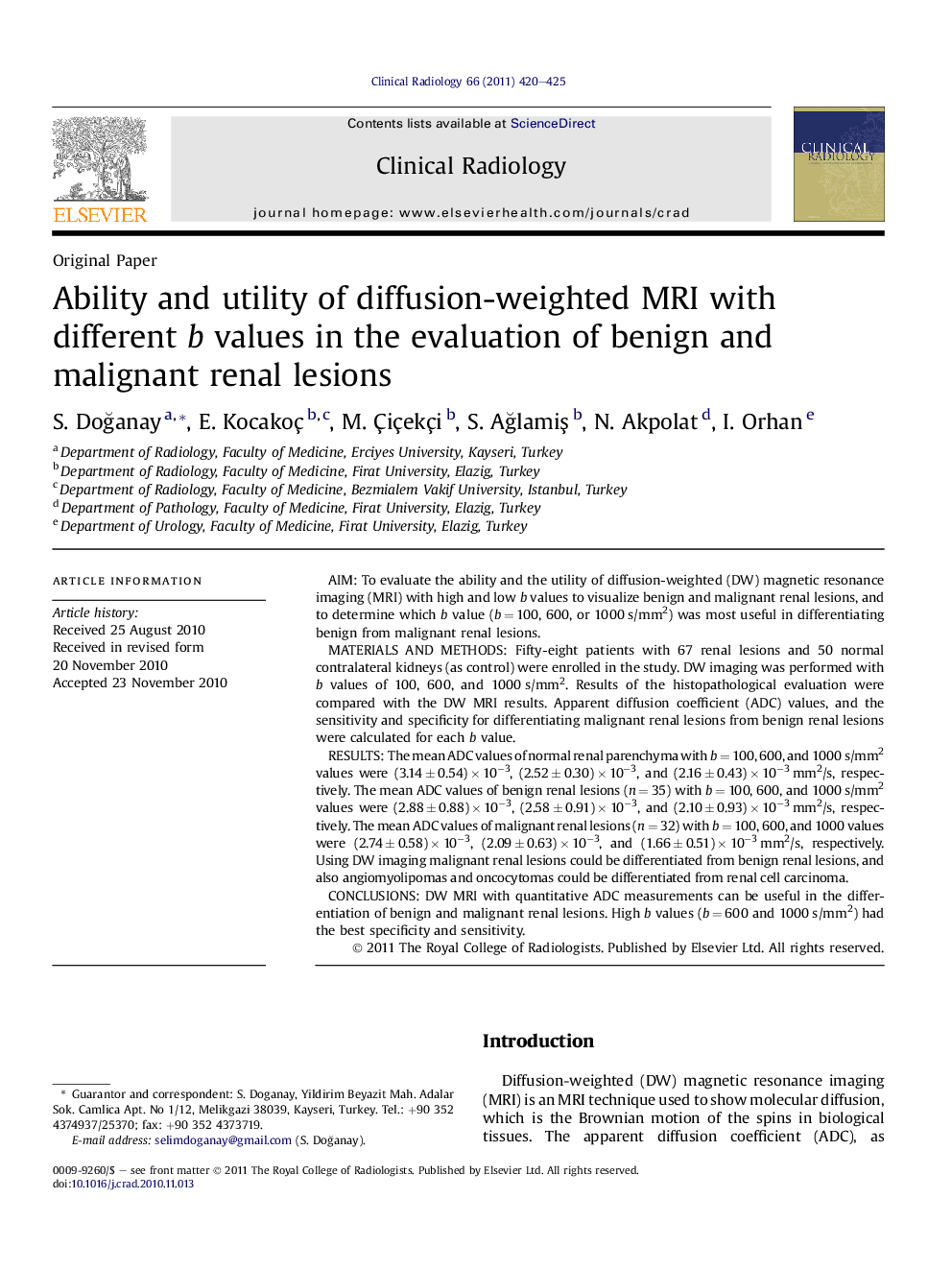| Article ID | Journal | Published Year | Pages | File Type |
|---|---|---|---|---|
| 3982072 | Clinical Radiology | 2011 | 6 Pages |
AimTo evaluate the ability and the utility of diffusion-weighted (DW) magnetic resonance imaging (MRI) with high and low b values to visualize benign and malignant renal lesions, and to determine which b value (b = 100, 600, or 1000 s/mm2) was most useful in differentiating benign from malignant renal lesions.Materials and methodsFifty-eight patients with 67 renal lesions and 50 normal contralateral kidneys (as control) were enrolled in the study. DW imaging was performed with b values of 100, 600, and 1000 s/mm2. Results of the histopathological evaluation were compared with the DW MRI results. Apparent diffusion coefficient (ADC) values, and the sensitivity and specificity for differentiating malignant renal lesions from benign renal lesions were calculated for each b value.ResultsThe mean ADC values of normal renal parenchyma with b = 100, 600, and 1000 s/mm2 values were (3.14 ± 0.54) × 10−3, (2.52 ± 0.30) × 10−3, and (2.16 ± 0.43) × 10−3 mm2/s, respectively. The mean ADC values of benign renal lesions (n = 35) with b = 100, 600, and 1000 s/mm2 values were (2.88 ± 0.88) × 10−3, (2.58 ± 0.91) × 10−3, and (2.10 ± 0.93) × 10−3 mm2/s, respectively. The mean ADC values of malignant renal lesions (n = 32) with b = 100, 600, and 1000 values were (2.74 ± 0.58) × 10−3, (2.09 ± 0.63) × 10−3, and (1.66 ± 0.51) × 10−3 mm2/s, respectively. Using DW imaging malignant renal lesions could be differentiated from benign renal lesions, and also angiomyolipomas and oncocytomas could be differentiated from renal cell carcinoma.ConclusionsDW MRI with quantitative ADC measurements can be useful in the differentiation of benign and malignant renal lesions. High b values (b = 600 and 1000 s/mm2) had the best specificity and sensitivity.
